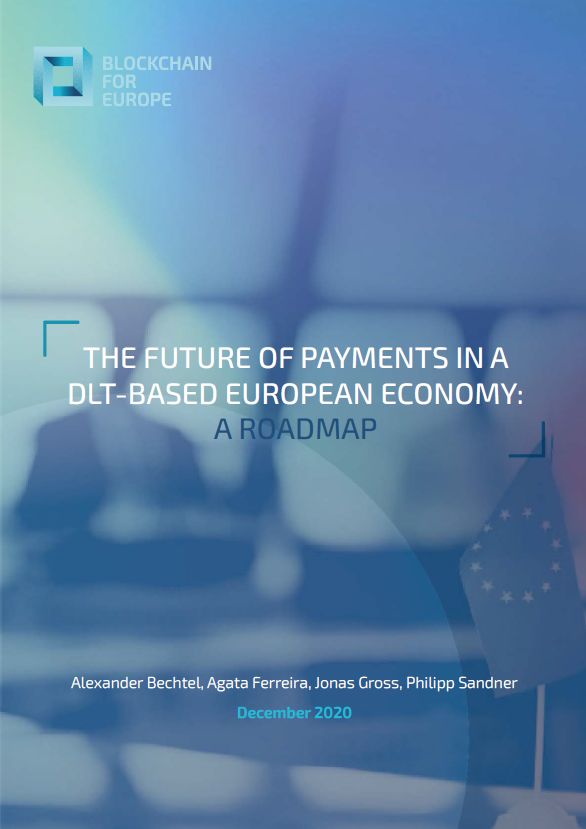First-of-a-kind report on solutions for a Digital Euro and the future of payments
Europe needs an effective, interoperable euro-denominated payment solution that will work with blockchain if the EU is to achieve digital competitiveness and strategic autonomy, say blockchain industry experts and academics in a first-of-a-kind paper published today.
Four academic experts, Alexander Bechtel, Agata Ferreira, Jonas Gross and Philipp Sandner, in collaboration with Blockchain for Europe and a number of industry and policy experts, have published a roadmap for the future of payments in a Distributed Ledger Technology (DLT) oriented European economy. Their conclusion is that the optimal payment solution for Europe would be a token-based euro central bank digital currency (CBDC) but it is unlikely that it will be implemented in the short term, and unclear if it will address all the challenges and needs of the European economy and its consumers.
The paper, “The Future of Payments in a DLT-based European Economy: A Roadmap”, envisages an increasingly complex world with the euro running on multiple infrastructures, including DLT systems, serving different classes of use cases (purposes) and a growing array of business models. The paper’s roadmap towards a digital euro and the future of payments in a DLT-based European economy entails a step-by-step timeline of payment solutions for multiple purposes that will launch at different points in time.
The paper also provides an analytical framework dividing the digital payments value chain into three pillars: the contract execution system, the digital payment infrastructure, and the monetary unit. Based on this framework, the authors compare account- and token-based, public and private sector payment solutions, including a bridge solution, e-money tokens, synthetic central bank digital currencies (sCBDCs), and a central bank digital currency (CBDC).
Finally, the authors urge the European policymakers to focus on providing adequate frameworks that support innovation in payment systems, mitigate risks, and harness the opportunities presented by the technology. Otherwise, Europe will struggle to meet the challenges of a DLT-based economy and will fail to be at the forefront of digital payments competitiveness globally.
Access the paper HERE

